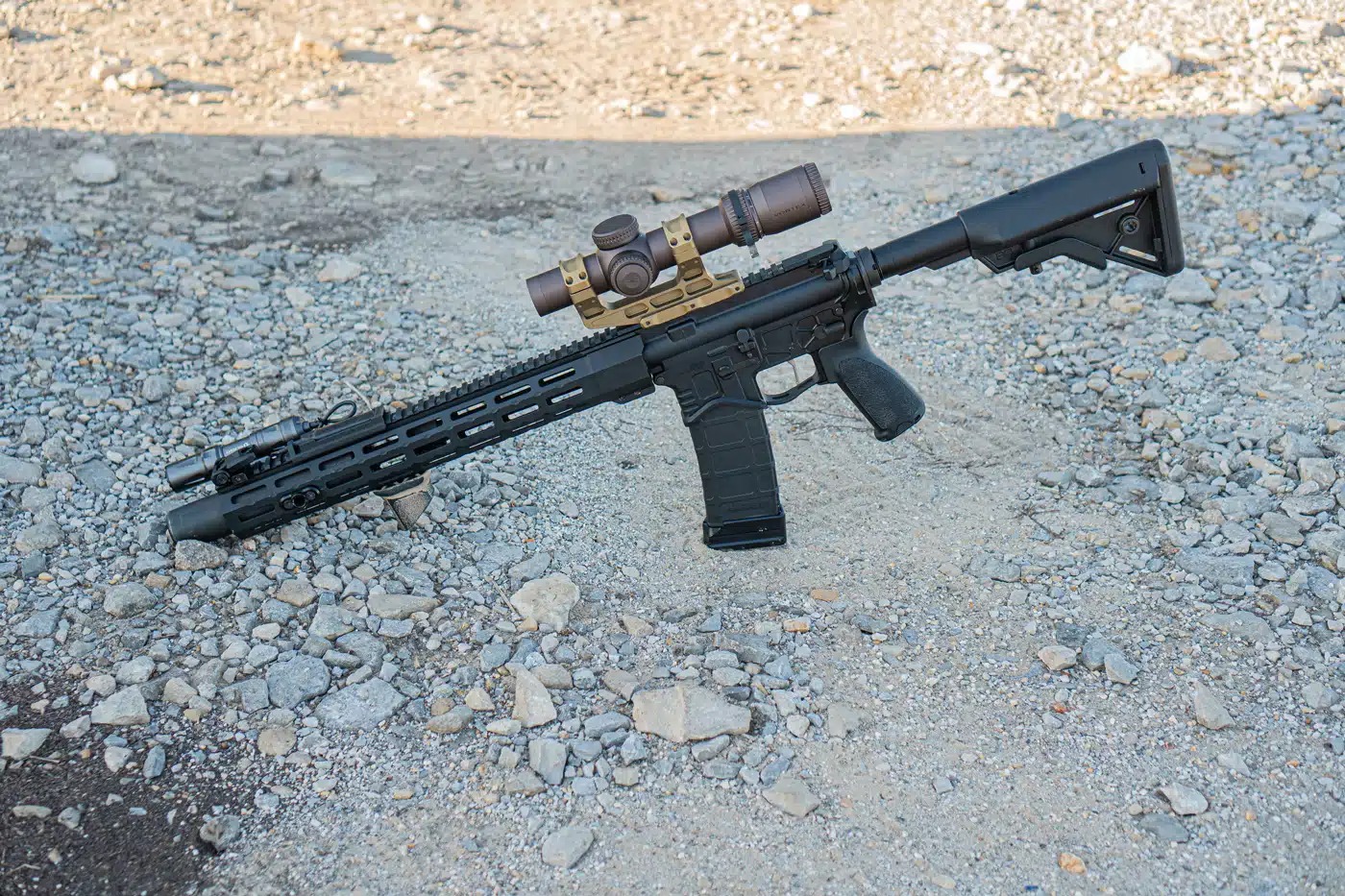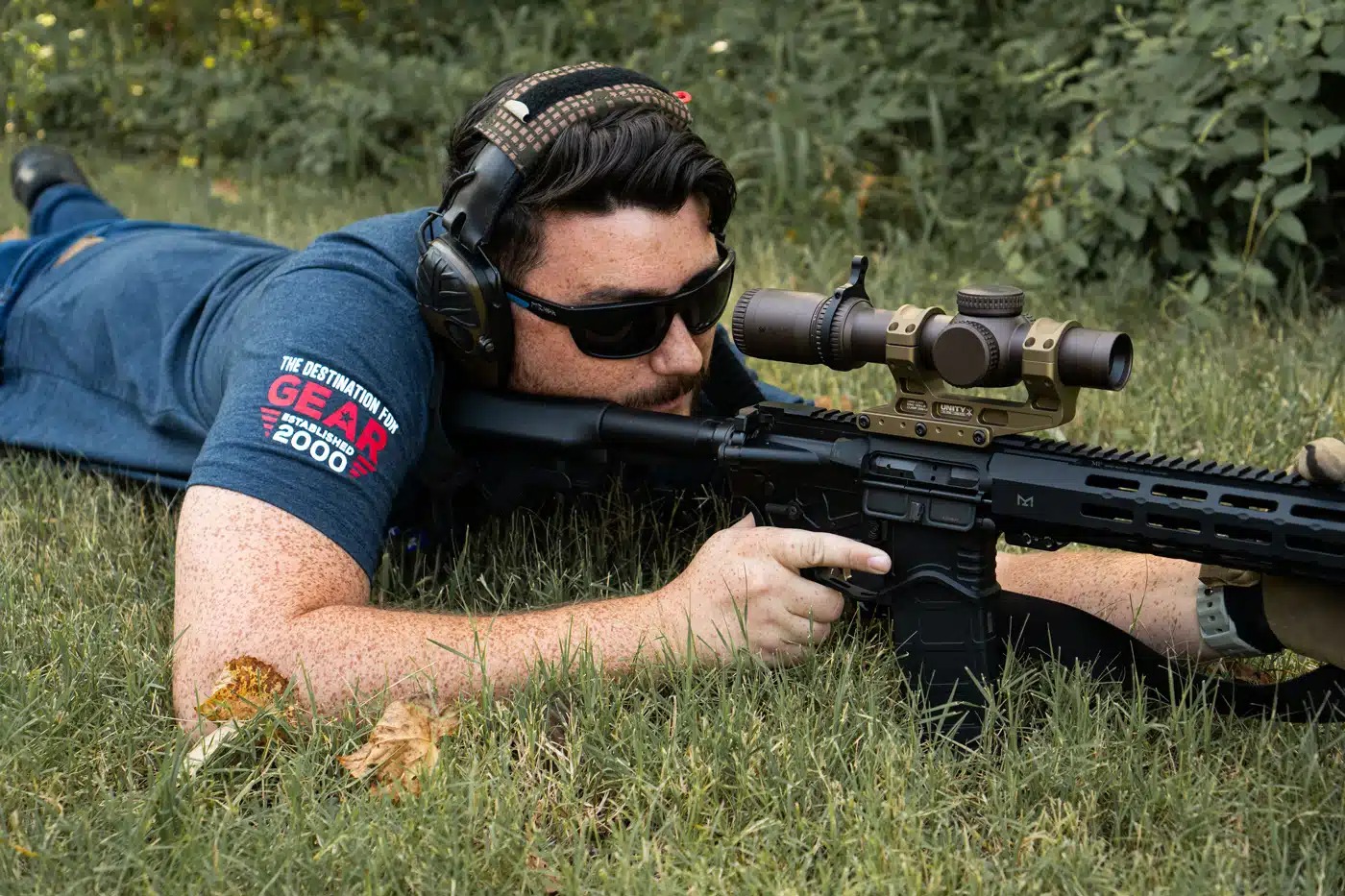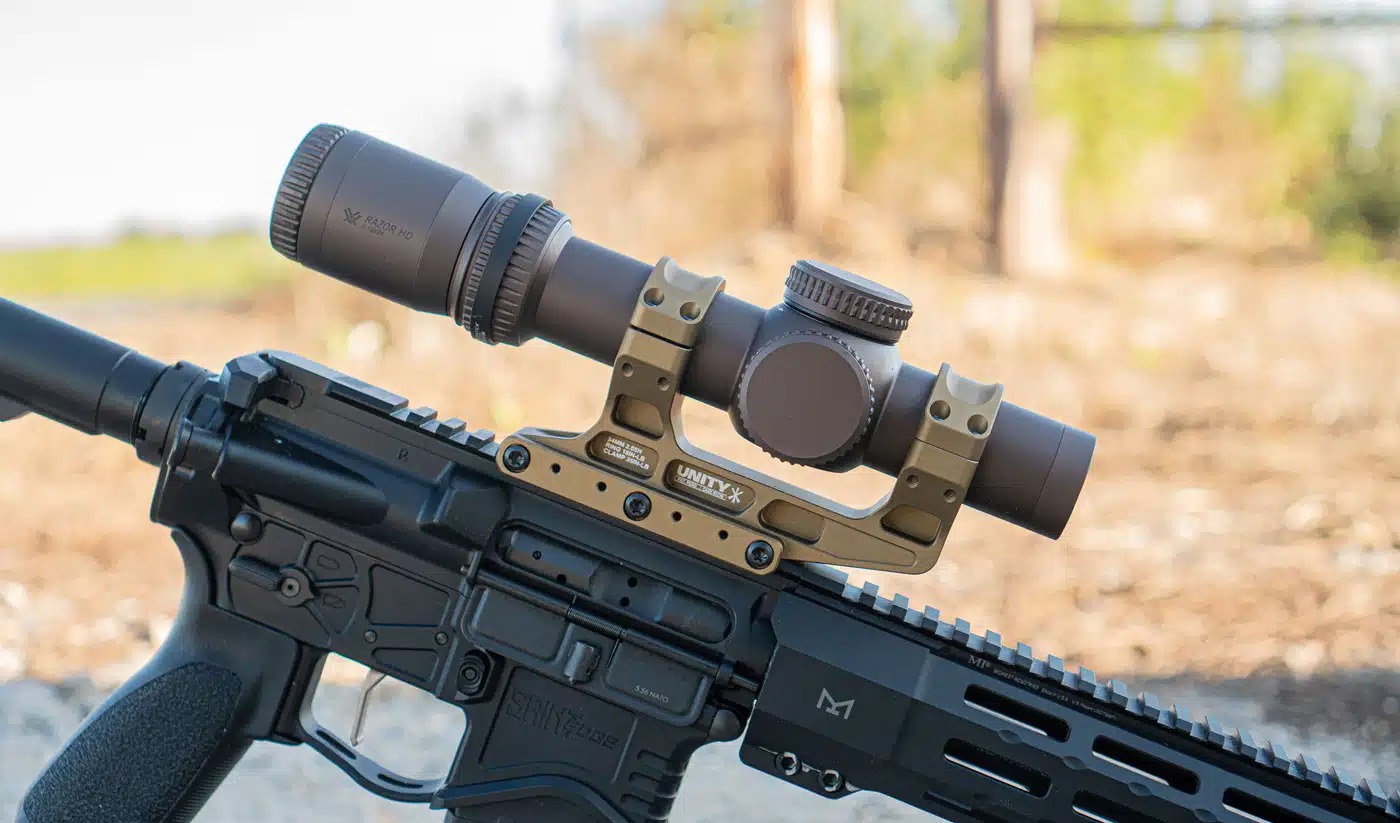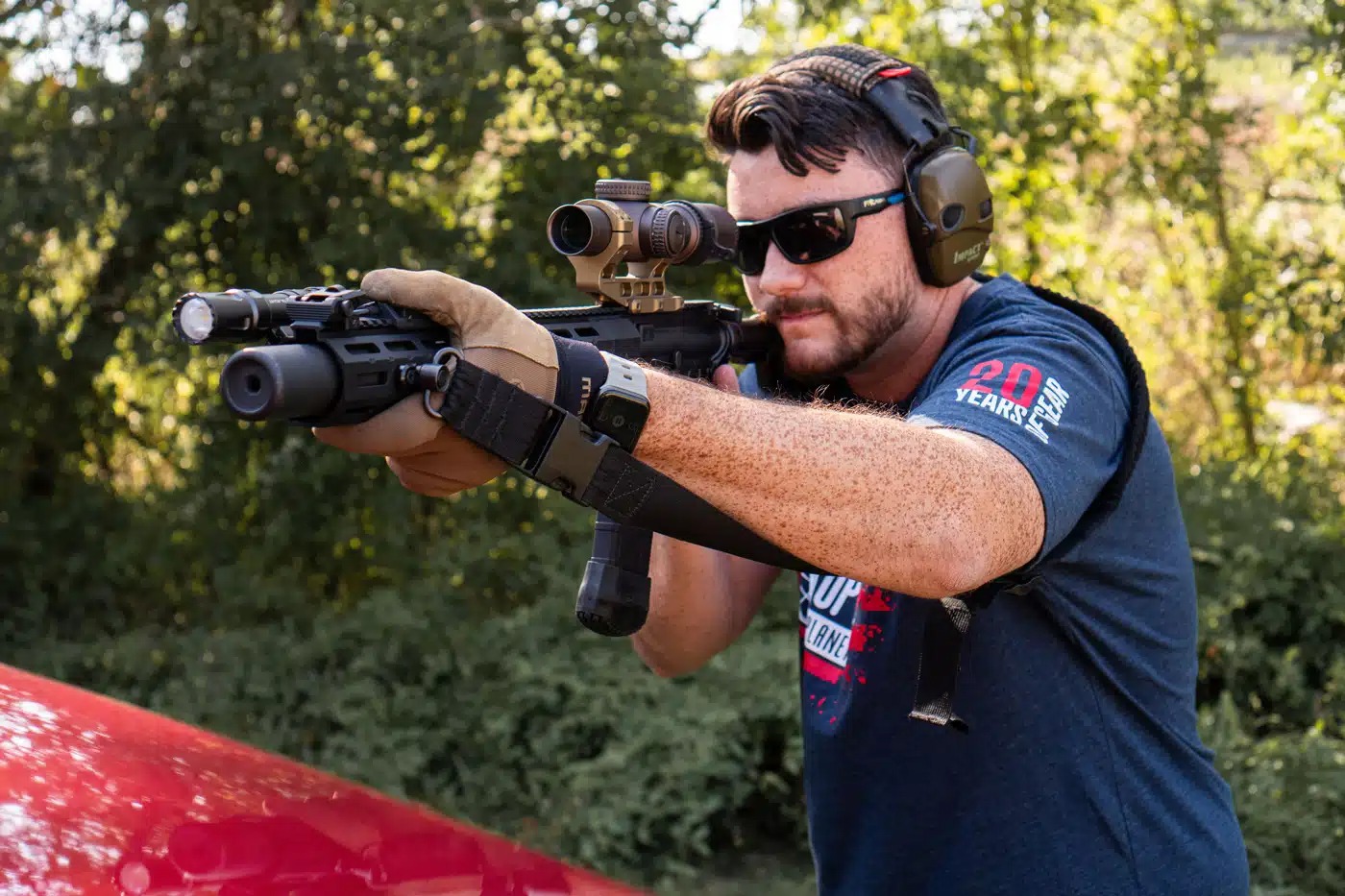
Initial Glimpse: Desert FDE Hellcat Pro Threaded
If you’re perusing this article, you’ve likely already observed the lead photo, which clearly showcases the considerable height of this low-power variable optic (LPVO) mount. However, there’s a specific rationale behind its elevated profile. One of the initial questions I’d like to raise is, can a mount ever be deemed “too tall”? Concerns about height over bore aside, throughout history, numerous firearm designs have demonstrated effectiveness with height-over-bore distances exceeding the norm.
The typical height over bore tends to fall within the range of approximately 1.5 to 1.8 inches. However, as mentioned earlier, numerous successful designs often exceed this range. But you might wonder, why is that the case? Well, the truth is, height over bore isn’t a critical factor – more on that will be discussed later.
The Mounting System
The mounting system featured in this article is produced by Unity Tactical and is known as the FAST LPVO (Low Power Variable Optic). The FAST series comprises a range of mounts and platforms designed by Unity Tactical with the primary objective of enabling users to attain a faster sight picture. The increased centerline height reduces the amount of rifle movement necessary for a shooter to align their aim with the target.

The mount, constructed from robust 7075-T6 aluminum, undergoes a Type III Hardcoat Anodization process, offering options in either black or FDE (Flat Dark Earth). On the website, it is priced at $369, which aligns with the rates of other top-tier scope mounts in the industry, such as Scalarworks or Badger Ordnance. However, for those who, like myself, prefer to shop at the reliably economical Optics Planet, there are potential savings to be had.
This mount includes additional accessories designed to cater to the use of backup red dot sights. Unity Tactical offers an offset red dot mount that can be affixed either in the front or rear of the FAST LPVO mount, allowing for customization to suit the shooter’s preference. As expected, they provide a wide array of plates to match various popular optic footprints.
We've Come Full Circle
If you’re anything like me, your mind might have just sparked a link to history and pondered, “Hold on a moment.” Back in the 1950s, an American engineer named Eugene Stoner was the visionary behind the inaugural AR. This lightweight rifle was a game-changer, unlike anything the world had witnessed when it made its debut.

What set it apart was the built-in top carry handle on the upper receiver. Today, most carry handles are affixed to a 1913 rail on the receiver. In the early 1990s, during the Mogadishu operation in Somalia, Delta Force operatives often used carbines with Aimpoint red dot sights attached to the carry handle. This setup resulted in a notably elevated height over bore, measuring just over 2 inches.
What set it apart was the built-in top carry handle on the upper receiver. Today, most carry handles are affixed to a 1913 rail on the receiver. In the early 1990s, during the Mogadishu operation in Somalia, Delta Force operatives often used carbines with Aimpoint red dot sights attached to the carry handle. This setup resulted in a notably elevated height over bore, measuring just over 2 inches.
The majority of mounts in the Unity FAST series elevate well-known optics to a height of 2.05 inches. It’s worth noting that, at some point, we phased out the carry handle for various reasons, one of which was to achieve lower optic heights, as optics gained increasing popularity. Subsequently, we introduced high mounts to bring us back to the height level that became standard for modern AR optics. It seems we’ve completed a full circle in this regard.
"Why? The Advantages"
Now, why did we revert to advocating for increased optic heights? Well, there are several reasons. The first reason I’ll mention is likely of lesser significance for about 90% of shooters, unless you’re involved in the military or law enforcement. A taller optic height proves advantageous when using a gas mask or night vision equipment. However, this doesn’t apply to the majority of us. So once more, the question arises: why would this be advantageous?

In my view, the most significant advantage lies in the heads-up shooting posture it encourages. No longer do you need to press your cheek against the rifle with your head held low. Instead, you can maintain an upright head position, resulting in a more comfortable neck posture.
Moreover, it establishes the ideal stance for effectively scanning with both of your eyes in any direction. I’ve noticed that I can maintain a comfortable cheek position while leveraging my eyes and peripheral vision to survey my surroundings. Instead of adopting a forward head posture, I remain upright and at ease, enhancing my awareness of my surroundings.
